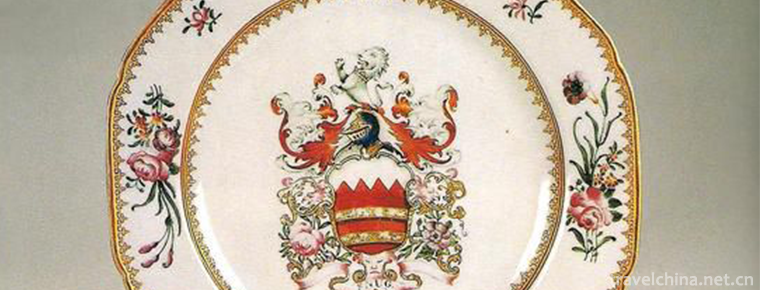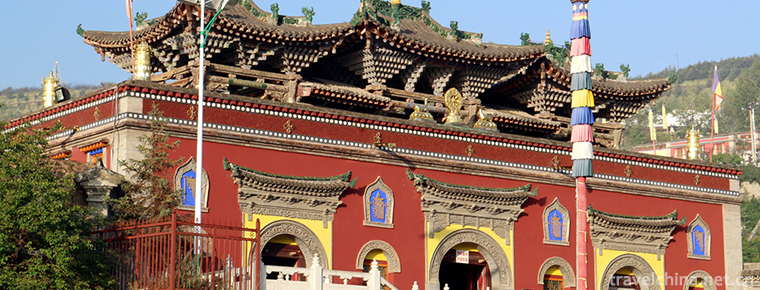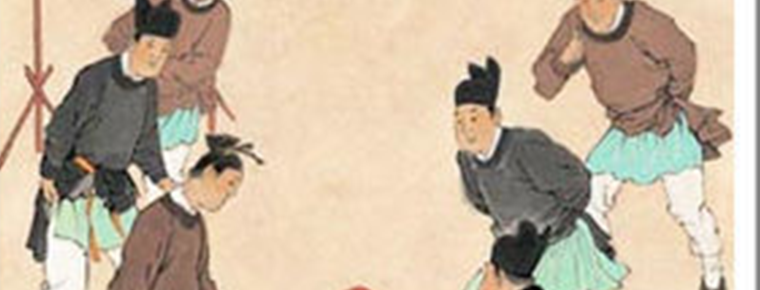Firing Techniques of Guangcai Porcelain
Firing Techniques of Guangcai Porcelain
Guangcai Porcelain Firing Technology, a local traditional handicraft in Guangzhou, Guangdong Province, is one of the national intangible cultural heritages.
Guangcai porcelain firing technology is the abbreviation of Guangzhou glaze color porcelain art. It appeared in the late Kangxi to Yongzheng period of the Qing Dynasty. It combines various kinds of colorful porcelain techniques, such as colorful, pastel and so on. It flourished in Qianlong, Jiaqing, and developed from Daoguang to Guangxu, and lasted for the Qing Dynasty. Influenced by various factors, the period of the Republic of China once fell into a low ebb. After the founding of the People's Republic of China, it has regained its glory.
On June 7, 2008, the firing technology of Guangcai Porcelain was approved by the State Council and listed in the second batch of national intangible cultural heritage list, item number_-97.
historical origin
The Middle and Late Kangxi Period to Yongzheng Period: the Initial Period
In the twenty-third year of Emperor Kangxi's reign in the Qing Dynasty (1684), the sea ban was lifted and overseas trade entered the period of customs administration. At this time, the number of foreign merchant ships coming to China increased. Foreigners attach great importance to Chinese porcelain and order or sample processing in Guangzhou, thus promoting the production and development of Guangcai porcelain.
From the middle and late Kangxi period to Yongzheng period, it was the initial stage of Guangcai. There were few things handed down in China. At this time, whether craftsmen, pigments, plain castings are from Jingdezhen. Most of them are drawn according to the pattern of Jingdezhen color porcelain. There are still more traces of Jingdezhen color porcelain. The contrast of color is not as strong as later, and the objects processed by samples are less.
Qianlong and Jiaqing Periods: Maturity Period without Sample Age
From the 18th century to the early 19th century (Qianlong and Jiaqing periods), Guangcai porcelain has formed its own unique style. The basic characteristics of its brilliance and gorgeousness have been recorded. At the beginning of Haitong, the Western businessmen came to China first to Macau and then to Guangzhou. In the mid-Qing Dynasty, there were a large number of ships and prosperous commerce. China's businessmen like to burn white wares in Jingdezhen and send them to Guangdong port to hire other craftsmen to paint them in imitation of Western painting methods. They bake and dye them in Henan Province on the southern bank of the Pearl River and make them into color pouring.
Daoguang to Guangxu Period: A Splendid and Splendid Development Period
From the 19th century to the early 20th century (Daoguang to Guangxu period), Guangcai entered another stage of development - the stage of gorgeous color and gradually stylized form.
In 1710 or so, Mason Porcelain Factory in Germany successfully produced high-quality castings. After that, European-made pottery gradually began to compete with China in the market, which led to the gradual decline of export of Chinese pottery to Europe since the late 18th century.
In the fifty-fourth year of Emperor Qianlong (1789), American businessmen opened the Pacific route from the United States to Guangzhou, and the sales market of Guangcai mainly turned to the United States. After a short transition in the Daoguang period, Guangcai in Tongzhi and Guangxu period has completely entered the stage of stylization.
In the 1920s, Guangcai Porcelain began to develop gradually to Hong Kong and Macao. After the outbreak of the Anti-Japanese War, Guangzhou fell to the enemy in 1938. Guangzhou's broadcasting and colored porcelain industry suffered a fatal blow, and most of them moved to Hong Kong and Macao. It was not until the victory of the Anti-Japanese War in 1945 that Guangzhou's advertising industry slowly recovered. At this stage, there are two main styles of Guangcai Porcelain: those sold to Europe and the United States, still dominated by the traditional style of the late Qing Dynasty; those sold to the provinces and Southeast Asia, mostly imitate the styles of Jingdezhen and Japan.
After the founding of New China: Creating a brilliant period of innovation and development
In the early days of the founding of New China, the Guangzhou government recalled some old Guangcai artists from Hong Kong and Macao, and recruited some young workers from around the city and countryside. The old artists gave apprenticeship to the artists, and trained the talents of Guangcai design and painting, which made the Guangcai art enter a new period of Renaissance and development in the 1950s and 1960s.
From 1980s to 1990s, under the stimulation of reform and opening up policy, Guangcai entered a period of diversified development. At this time, the government vigorously supported the recovery and production of Guangcai. In the early 1980s, the main export destination of Guangcai was the United States. The main theme was the so-called antique porcelain, which combines flowers and birds with ancient costume figures. Since the 1990s, because of the war in the Middle East, the main export place of Guangcai, Guangcai has been frustrated.
In the 21st century, the state and local governments at all levels have intensified efforts to protect and develop the firing techniques of Guangcai porcelain.
Inheritance and protection
Inheritance value
The firing technique of Guangcai Porcelain is the representative of glaze paintings and an important carrier of Lingnan culture. It has a long history. Its firing technique is rooted in the folk. It reflects the four characteristics of the fusion of Chinese and Western techniques, the unique production of pigments, the strong cultural characteristics of Lingnan, the rich painting techniques and themes. It has important cultural and historical research value.
Guangzhou's firing technique of colored porcelain combines Guangzhou's colored and Jingde's porcelain. It combines northern traditional porcelain painting with Lingnan Painting School's technique, Chinese colored porcelain craft with Western porcelain art and painting technique. It is unique in its artistic style of North-South brilliance and east-west integration. It is also unique in its artistic characteristics of "heaping up gold and accumulating jade", which contains rich cultural connotation and rich Lingnan characteristics. Its unique production of pigments, rich painting subjects and unique artistic style show the important value of the firing technology of Guangcai porcelain in culture, history, economy, practicality and science and technology.
Inheritance status
The biggest problem facing the development of Guangcai is the lack of successors. Because of the long period of maturity and hard work in learning, young people are more reluctant to learn this traditional craft. In addition, for a long time, Guangcai has been facing the foreign market for production and sales, and since entering the 21st century, it has been mainly facing the domestic market. China's domestic market has a low awareness of Guangcai and a low acceptance of its style. As a result, Guangcai's market is still relatively narrow and its development potential is limited. It is difficult to attract more people to learn and engage in this skill.
Inheriting characters
Yu Peixi, male, was born in November 1929. On May 26, 2009, Yu Peixi was selected as the representative successor of the third batch of national intangible cultural heritage projects, which was declared by Guangzhou, Guangdong Province. Project Name: Firing Techniques of Guangcai Porcelain.
Chen Wenmin, male, was born in February 1961. On December 20, 2012, Chen Wenmin was selected as the representative successor of the fourth batch of state-level intangible cultural heritage projects and declared in Guangzhou, Guangdong Province. Project Name: Firing Techniques of Guangcai Porcelain.
Tan Guanghui, male. On May 16, 2018, Tan Guanghui was selected as the representative successor of the fifth batch of national intangible cultural heritage projects and declared in Guangzhou, Guangdong Province. Project Name: Firing Techniques of Guangcai Porcelain.
protective measures
On May 4, 2016, "Guangcai Porcelain Firing Techniques" Popularization Training Course was officially opened in Guangzhou Academy of Fine Arts.
On May 27, 2015, Nanfang Daily Huizhou Observation launched a series of reports on the "craftsmen of Huizhou", and the firing skills of Guangcai porcelain were reported.
Over the past 60 years, Yu Peixi has devoted himself to teaching and has brought out more than 500 apprentices. Many of them have become famous painters, among which Chen Wenmin is the best.
In 2004, the Guangdong Provincial People's Government included Guangcai in the Provisions for the Protection of Traditional Arts and Crafts in Guangdong Province, and promulgated the Implementation Plan of Provisions for the Protection of Traditional Arts and Crafts in Guangdong Province, which listed Guangcai as one of the key traditional arts and crafts varieties to be protected and rescued in the near future.
social influence
Important exhibition
From March 16, 2017 to May 18th, the 300 year essence exhibition of Guang Cai porcelain, jointly sponsored by the Tianjin Museum and the Guangdong Provincial Museum, was exhibited in Tianjin Museum.
On September 13, 2018, the Fifth China Non-Heritage Exposition opened in Jinan, Shandong Province. The firing skills of Guangcai porcelain were displayed in the exhibition.
Honorary commendation
In 2012, Guangcai Porcelain Wall Screen "Brilliant Man Over the Ground Times Longevity" won the Gold Prize of Shenzhen Cultural Expo.
Yu Peixi's works, Guangcai Opening Window Character Straight Cylinder Bottle and Guangcai Dragon Wind Pattern Lianzhou Bottle, are collected by Guangdong Museum.
Yu Peixi's works "Drawing Jiulong Disk" and "Drawing Wind Flower Bowl" are collected by Guangdong Folk Art Museum.
international exchange
In 2006, Chen Wenmin's work "Gothenburg and Whampoa Ancient Port" was presented to visiting Swedish King Carl XVI.


-
The Wudalianchi Scenic Area
Wudalianchi Scenic Spot: National AAAAA Scenic Spot, World Geological Park, World Human and Biosphere Reserve, International Green List.
Views: 190 Time 2018-12-05 -
Conch Valley Scenic Area
Hailuogou is located in Moxi Town, Luding County, Sichuan Province, on the eastern slope of Gongga Mountain. It is a very high mountain area on the eastern edge of the Qinghai-Tibet Plateau.
Views: 183 Time 2018-12-12 -
Taer Temple Scenic Area Xining City
Tar Temple, also known as Tar Temple, was founded in the 10th year of Hongwu Ming Dynasty (1377). Named after the Great Silver Pagoda built in memory of Zongkaba, the founder of the Yellow Religion.
Views: 125 Time 2018-12-12 -
Wanfeng Forest Scenic Area
Wanfeng Forest Scenic Area, located in the southeast of Xingyi City, Guizhou Province, is the largest and most typical karst peak forest in China, with its magnificent momentum, peculiar shape and bea.
Views: 164 Time 2018-12-17 -
Yunya Temple Scenic Area
Yunya Temple Scenic Area is a comprehensive scenic area, which is represented by the unique Danxia landform on the Loess Plateau, and is composed of abundant forest resources.
Views: 138 Time 2018-12-22 -
Quancheng Marine Polar World
Quancheng Marine Polar World is a comprehensive exhibition hall located in Qihe County, Dezhou City, Shandong Province, with a total investment of 1 billion yuan .
Views: 251 Time 2019-02-07 -
ancient game of kicking a ball
Cuju, also known as "Biju", "Cuju", "Cuju", "Cuyun", "Cuyun", "building a ball" and "kicking a round", has the meaning of "Cu.
Views: 158 Time 2019-04-22 -
Beijing Police College
Beijing Police College is a full-time general undergraduate college approved by the Ministry of Education, sponsored by the Beijing Municipal People's Government, administered by the Beijing Public Se.
Views: 114 Time 2019-09-06 -
Cheongsam goes to the world
The Organizing Committee of the 2010 Shanghai World Expo has customized 60 sets of tapestry cheongsam as gifts from the Chinese government to the wives of heads of state, each worth 100000 yuan..
Views: 335 Time 2020-12-11 -
Geographical environment of Luzhou
Luzhou City, located in the southeast of Sichuan Province, borders Chongqing and Guizhou Province in the East, Guizhou Province in the south, Yunnan Province, Yibin City and Zigong City in Sichuan Province in the west, Neijiang City and Chongqing City in Sichuan Province in the north..
Views: 307 Time 2020-12-14 -
Deyang Sports
In 2017, Deyang City built 791 national fitness routes and 608 national fitness projects. At the end of the year, there were 10 public stadiums and stadiums, and the annual sales of sports lottery tickets were 160 million yuan..
Views: 341 Time 2020-12-14 -
Nanchong City honor
"Three products" strategy demonstration city of consumer goods industry, charming city with Chinese characteristics, national garden city and excellent tourism city in China.
Views: 291 Time 2020-12-17








